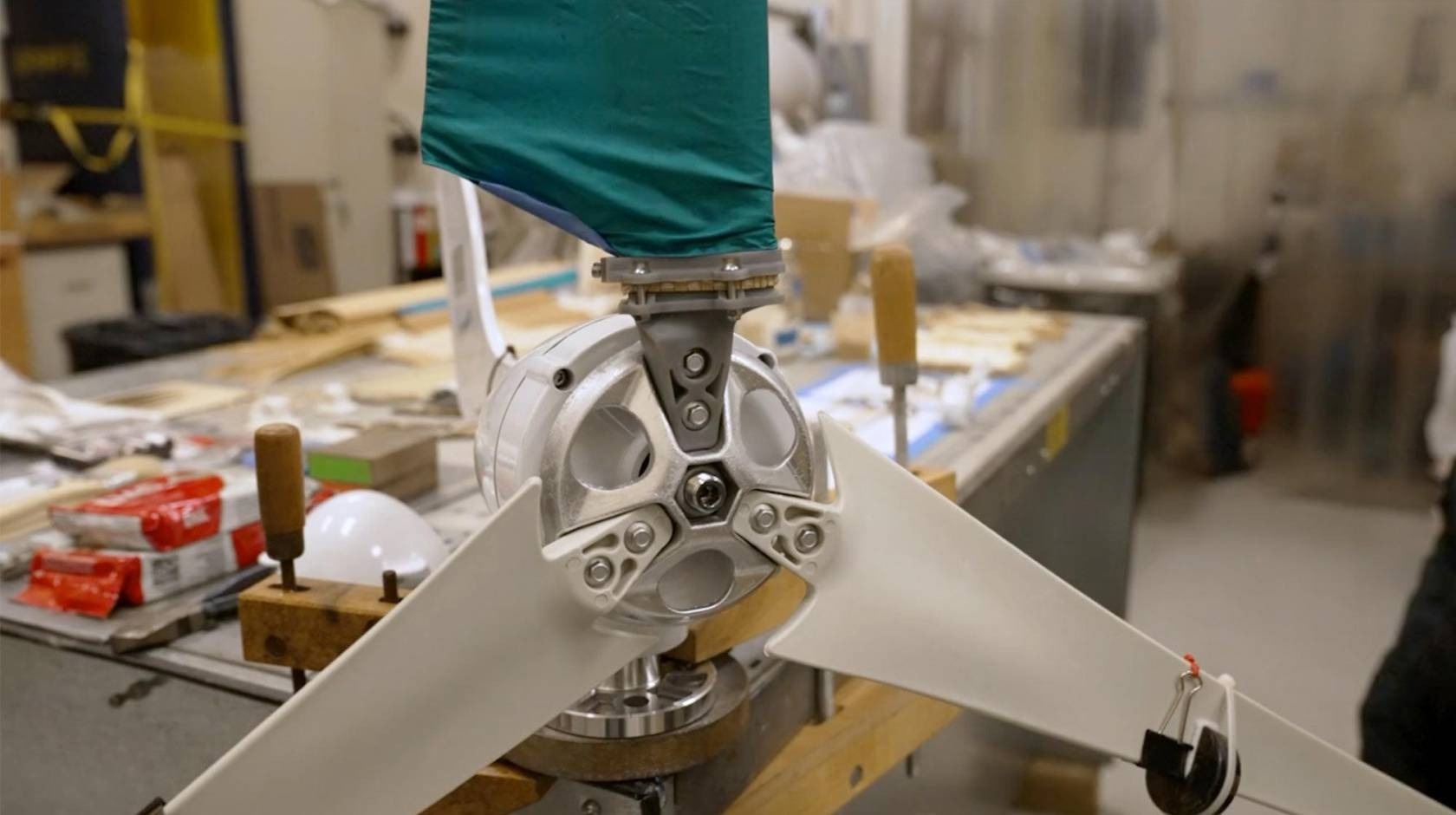When it comes to renewable energy, we are all familiar with the sight of wind turbines across the countryside and in coastal regions. Yet, many do not take a moment to reflect upon the materials used to create these renewable energy behemoths as they continue to pop up in familiar surroundings.

Image Credit: Gregory Urquiaga/UC Davis
While it is considered a good thing that more and more wind farms are being built as they help support the energy transition from fossil-based fuels, the life span of the blades on the turbine are only around 20 years.1 This means that they must be replaced and disposed of once they have reached the end of their service life.
This can be a major challenge, as while mostly constructed of materials that are considered recyclable, separating the component parts can be an extremely difficult and costly process.
Now a group of researchers at the University of California, Davis (UC Davis) are attempting to develop compostable, environmentally compatible wind turbine blades using bamboo and mycelium (a fungal rootlike network of hyphae that sprouts mushrooms).
Cleaner, Clean Energy
The main incentive beyond the project is to tackle the emerging problem of wind turbine blade disposal, which is a major issue when it comes to the wider adoption of this extremely important energy solution.
As a renewable energy source, wind power is among the fastest-growing, and this means that as more turbines and farms are erected, the waste issue becomes a growing concern.
We want to have clean energy, but clean energy cannot pollute the environment, and it can’t cause deforestation… If we’re doing clean energy, it’s not to deforest the Amazon rainforest. We want to be good citizens for everybody.
Professor Valeria La Saponara, UC Davis Department of Mechanical and Aerospace Engineering
As it stands, most wind turbine blades are discarded using traditional waste disposal methods, meaning they eventually end up as part of the landfill.
With each blade spanning around 127.5 meters (418 feet),2 the magnitude of the task at hand when tackling their disposal becomes apparent. With current growth estimates, it is anticipated that around 43 million metric tons of wind turbine blades could be sent to landfill sites around the world by 2050.1
Compostable Blades
While the waste issue remains a key motivator, the resources needed to construct wind turbine blades should also be considered when thinking of ways to clean up wind power. The majority of blades are constructed using various composites, including balsa wood, plastics, and glass fibers.
These composite blades make recycling difficult in the first instance, as separating these materials is laborious and expensive. Moreover, due to the increasing need for balsa wood to keep up with the demand for wind turbines and industry growth, parts of the Amazon Rain Forest are being subjected to overlogging with overexploitation of the Ecuadorian territories.
This overlogging impacts the environment and indigenous communities, meaning there is an added societal and environmental impact. While some manufacturers have switched to using PET plastics as a substitute, in the long-term, this contributes further to the huge amount of PET waste already in the environment.
This is where the “mushrooming” UC Davis project comes into its own, as La Saponara has the vision of replacing balsa, plastics, and glass fibers with compostable material using bamboo, biomass, and mycelium from California’s agricultural waste.
A Sustainable Solution: Compostable Wind Turbine Blades
Video Credit: Youtube.com/UC Davis
Mycelium is quickly becoming recognized as something of a natural wonder material as it can be used for packaging materials, construction materials, and even mycelium-based ‘leather’ as an alternative textile.
La Saponara has assembled a multidisciplinary team to work on the project, as work of this kind is dependent on bringing in researchers and experts with backgrounds in engineering, design, and chemistry to give the project a greater chance of success.
The team has recently built a working prototype which is currently in testing to demonstrate various parameters of a wind turbine blade.
We want to do structural testing to find out how fast a rotation we can have, how much power we can generate.
Professor Valeria La Saponara, UC Davis Department of Mechanical and Aerospace Engineering
Moreover, the team will test how resistant the mycelium blades are to certain weather conditions, such as high winds, by replacing the blades of a commercial 1-kilowatt turbine to move towards proof-of-concept.
Once we have the proof of concept for 1 kilowatt, which is a reasonable amount of power, then we can start working with companies for the commercialization of this concept for distributed energy applications.
Professor Valeria La Saponara, UC Davis Department of Mechanical and Aerospace Engineering
While the project is still considered to be in its infancy, the UC Davis team has already received a grant for its initial research from UC Davis Sustainability’s ‘The Green Initiative Fund,’ as well as funding from the College of Engineering’s Next Level strategic research vision.
If successful, La Saponara and her team could help steer wind power toward a cleaner future and help take sustainability to new heights as the world continues to tackle the ongoing climate crisis.
References and Further Reading
- Knox, S.C. (2023) Making wind power even greener, University of California. Available at: https://www.universityofcalifornia.edu/news/making-wind-power-even-greener
- Wind market reports: 2022 edition (2023) Energy.gov. Available at: https://www.energy.gov/eere/wind/wind-market-reports-2022-edition
Disclaimer: The views expressed here are those of the author expressed in their private capacity and do not necessarily represent the views of AZoM.com Limited T/A AZoNetwork the owner and operator of this website. This disclaimer forms part of the Terms and conditions of use of this website.